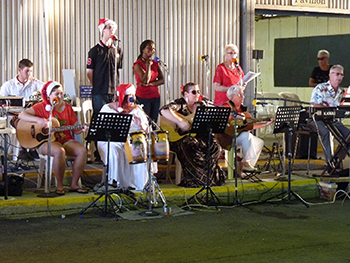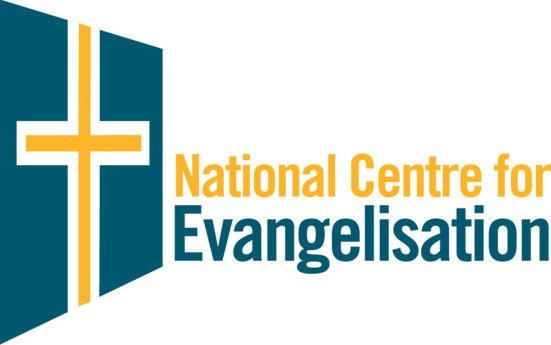The town of Morisset is located on beautiful Lake Macquarie and is part of the Maitland-Newcastle Diocese. In the 1880s, St Mary MacKillop founded a convent and a school, and the legacy of her work is still present in a thriving parish primary school.
Morisset’s proximity to the Sydney-Newcastle Freeway, as well as escalating home prices in Sydney, have led to a growth in population as more families choose to live in the area, commuting to work or even working from home.
 The Catholic parish of St John Vianney, Morisset, is led by a lay leadership team operating with the guidance of a priest supervisor and the support of a sacramental priest. Morisset parish does not have a parish priest, yet it functions as a canonical parish.
The Catholic parish of St John Vianney, Morisset, is led by a lay leadership team operating with the guidance of a priest supervisor and the support of a sacramental priest. Morisset parish does not have a parish priest, yet it functions as a canonical parish.
You may well ask what this means and how it works, as did the National Centre for Evangelisation when it interviewed John and Uta France, members of the lay leadership team, and Fr Geoff Mulhearn, the priest supervisor, or moderator as the role is sometimes called.
About 10 years ago, Morisset parish was forced to consider alternative ways of operating due to a priest shortage. Referencing Canon 517 §2 from the Code of Canon Law, it was proposed that parish leadership would be entrusted to a team of lay people, who would work with a priest who was principally available for sacramental purposes and would provide guidance to the leadership team, as required.
A priest of 60 years, Fr Geoff has been in the role of priest supervisor since the initiative commenced. He holds the same responsibility for Toronto, a neighbouring parish which is led by a lay man.
“This model is not a second-best option,” Fr Geoff says. “In Morisset and Toronto the model has worked very well with the leadership in both parishes being excellent.”
However, he notes that while he continually desists from being called the “parish priest”, many people, including other priests and diocesan staff, have difficulties understanding and working with the model. This confusion or lack of understanding is possibly reasonable given Catholics are familiar with a parish being led by a priest, and not by one, or more, lay people. Having first-hand experience of the model, Fr Geoff believes it not only to be “viable and powerful”, but one that he hopes other bishops and priests will consider.
John and Uta have also found the model to be very effective. Uta suggests the model works because “we spread the workload”.
“While it’s collaborative, we know the buck stops with us,” she adds. “It has more possibilities than just a stop-gap due to a shortage of priests. I think it could lift the burden for parish priests.”
When the parish first committed to operate with this model, a team of seven people formed the leadership team. The team was responsible for the day-to-day operations of the parish, for example, work, health and safety matters, professional standards, employment of staff and the maintenance of parish facilities. Each member also took responsibility for foundational areas of parish life: identity and community, prayer and worship, formation, mission and outreach, leadership and structure. The team worked closely with the parish secretary and the parish pastoral council.
 John highlights that their team, like many parishes in their diocese, has also had to work within the tensions and stresses of the repercussions of the sexual abuse crisis. To this end, as parish leaders they are required to receive regular professional supervision.
John highlights that their team, like many parishes in their diocese, has also had to work within the tensions and stresses of the repercussions of the sexual abuse crisis. To this end, as parish leaders they are required to receive regular professional supervision.
There has also been a strong commitment to “being available”. John says they didn’t want to be like other parishes where an answering machine took most of the calls. Rather, they share the responsibility for answering calls, day and night, and are always ready to be the first point of contact for people in distress or for the more practical matters of running a parish.
However, the last couple of years have seen some challenges for the parish. Firstly, for a variety of reasons, the leadership team is currently much smaller with only John and Uta at the helm. This is not an ideal situation, but due to COVID-19 the parish has been unable to have their annual Pentecost Sunday gatherings for the past two years, where they would come together to plan, pray and ensure their model remained effective and sustainable. Hopefully, 2022 will see a return to this event as well as a renewal, and increase in members, of the leadership team.
Secondly, COVID-19 restrictions have meant almost two years without “in-person” Mass attendance. Before the pandemic, about 200 people would regularly attend Sunday Mass. Now, with limited numbers allowed in their church, only 40 people can attend. To provide for those who couldn’t attend Mass, the team evaluated that a “Zoom Mass” provided greater interaction between participants, rather than a livestream version. The parish has also worked hard at outreach during this time. For example, parishioners who weren’t tech-savvy had a hard-copy of the bulletin delivered to their home each week, keeping them connected to the parish.
Finally, with limited ability to attend formation or training, the parish embraced the online offerings from the Alive in the Spirit conference. With Uta’s encouragement, parish members were able to explore different initiatives, as well as being encouraged and revitalised in their respective ministries. Such formation provided many of the tools required to achieve their future goal of greater outreach to the families and young people in the parish.
Given that, in Morisset, team members are not paid for their ministry work, one wonders how long this model can be sustained. Fr Geoff also believes some sort of financial remuneration must be considered in the future to ensure sustainability. For now, though, John and Uta aren’t looking for financial rewards. Unable to have a family, they are devoted to their ministry and call St John Vianney parishioners their family.
John, Uta and Fr Geoff are a little uncertain as to what the future holds. They are all mourning the death of Bishop Bill Wright who gave the parish the opportunity to trial this model of leadership. And while he wasn’t always 100 per cent sure the model would be a success, Bishop Bill offered encouragement without interference. The team, together with Fr John Purnell, the new sacramental priest, looks forward to sharing with a new bishop the fruits and possibilities that their parish leadership model has provided.
In closing, John suggests we need to think deeply about how we work as a parish because, ultimately, we need to remember we are here for Christ’s mission.
“Do we really want to continue the way we have been going?” he asks. “It’s not been working in terms of what the Church is called to be. We need to be more engaged and less exclusive. The Spirit works in the hearts of all people, and if we give people the freedom to be involved, there could be some great initiatives.”
Images: Fr Geoff Mulhearn (back) with Uta and John France; musicians at Christmas Mass (supplied)
Words: Sharon Brewer



